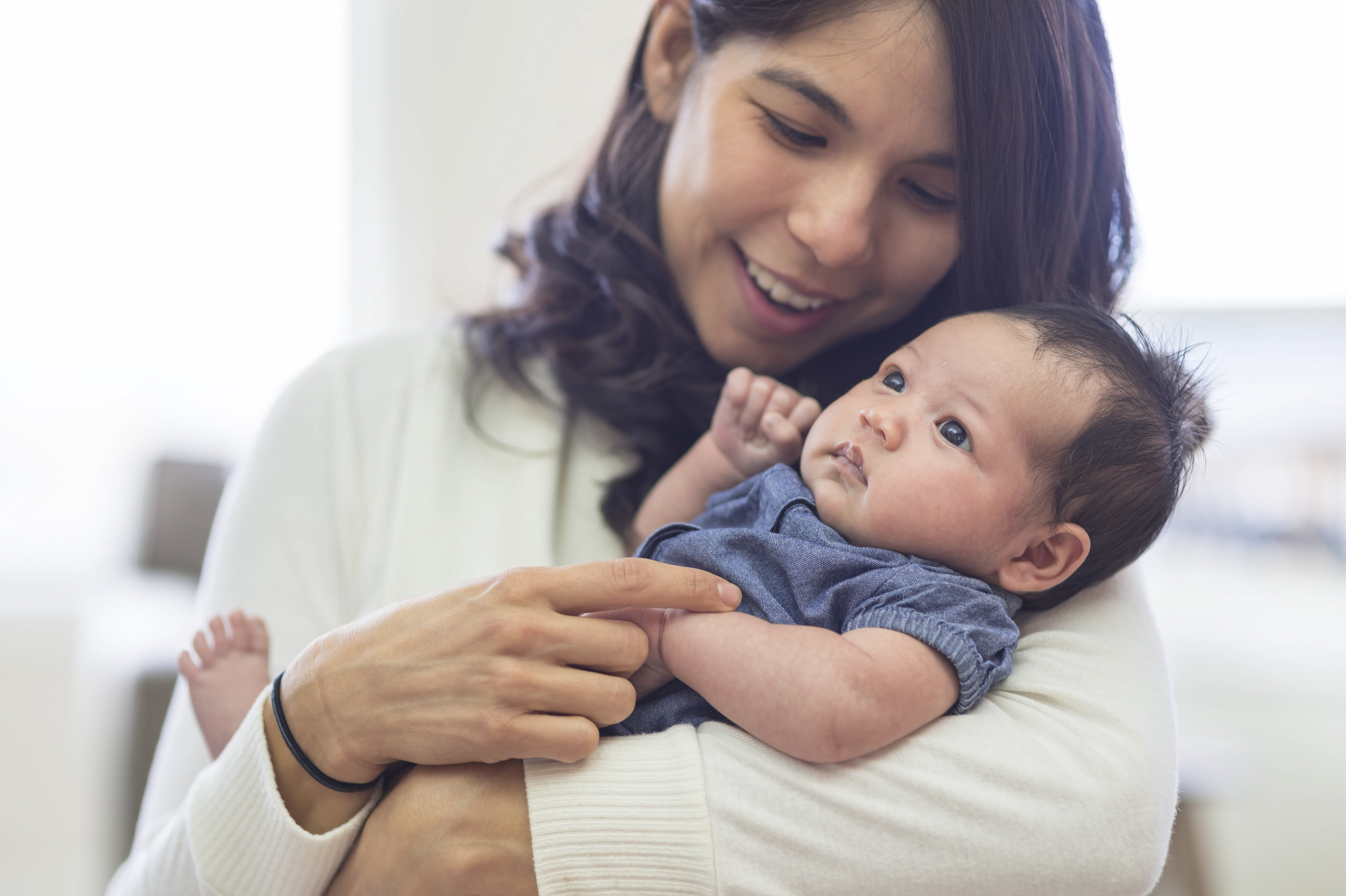The terms 'mother' and 'breast' are used throughout our documents; we recognize and respect that individuals and families may use other preferred terminology.
Babies are born with very near-sighted vision and are not able to focus on items further than 25 centimetres (10 inches) from their face. Over the first year, a baby's vision will continue to improve.
At birth
Newborn babies seem to love human faces. Although their vision is quite blurry at first, they can see well enough to focus on their mother's face when being held to the breast. Within the first few hours after birth, newborn babies can tell the difference between their parent's face and the face of someone else.
Newborn babies are able to follow a light with their eyes and turn toward lights. However, their eye movements may not be well coordinated at first. Their eyes may move independently of each other.
Here are a few interesting facts about what newborn babies like to look at:
- They love to gaze at people's eyes, especially those of their parents.
- They are attracted to bright colours.
- They enjoy light and dark contrasts and sharp outlines.
- They recognize and are interested in primary colours: red, blue and yellow.
- They like patterns, such as stripes or circles, rather than plain surfaces.
- They prefer curved patterns rather than straight, and more complex patterns rather than simpler ones.
- They are especially attracted to movement, and they will focus on and follow a moving ball with their eyes.
Month one
As a newborn baby grows and their vision is improving, they can see about 1 metre (3 feet) from their face by a month of age. If you lay your baby on their back and dangle an object from the end of a string within their line of vision, they will watch it, but they will not follow it if you move the object away. Your baby spends a lot of time evaluating their surroundings now. When sitting still, they can take in quite a bit of visual information.
Your baby continues to enjoy human faces and high-contrast patterns. They like items that are black and white, and bold in pattern. For example, they may like polka dots and checkerboards. They probably will not look at pastel toys, as their muted colours are less interesting and harder to focus on.
Month two
Your baby's eyes are becoming more coordinated now. Their eyes are working together, their eyesight is improving, and they can focus better. Their eyes can fixate on objects, and they probably look more alert now because of this. They enjoy watching things that are in motion, and they can track moving objects both horizontally and vertically. They can recognize people and make eye contact. They also recognize familiar objects.
If you lay your baby on their back and swing an object on a string from side to side, they will try to follow it.
Month three
Your baby's vision continues to improve this month. Now they can tell the difference between someone who is smiling and someone who is frowning. If someone frowns at them, they probably will not smile, and they might begin to cry.
Their spatial perception is also improving. Your baby is starting to realize whether a toy is close enough for them to reach, or halfway across the room. They are now able to follow a toy swinging on a string from side to side.
Your baby becomes fascinated by their hands around this time, and they will spend a great deal of time watching their movements.
Month four
Your baby continues to enjoy bright, bold colours, and they are particularly drawn to things that are red or blue. They may also be able to tell the difference between objects that are different in texture.
Months five to seven
Your baby's depth perception is improving dramatically. They can now tell the difference between a face that is real, and a face that is part of a picture.
They also realize that they can follow an object if it leaves their line of vision. They have figured out that they can move their head to continue to watch the object. They may watch a toy as it falls or rolls away.
If you are looking at something, your baby will try to figure out what you are watching in order to learn more about the world around them. They will start to make links between what you are looking at and the words you use to describe them.
Month eight
By this time, your baby's eyesight has improved to near normal. They can now see things that are in the distance, and thus you will find them staring off at objects that are farther across the room. They can spot very small objects nearby. They are also good at reading people's faces and figuring out whether they are happy or sad.

